|
|
|
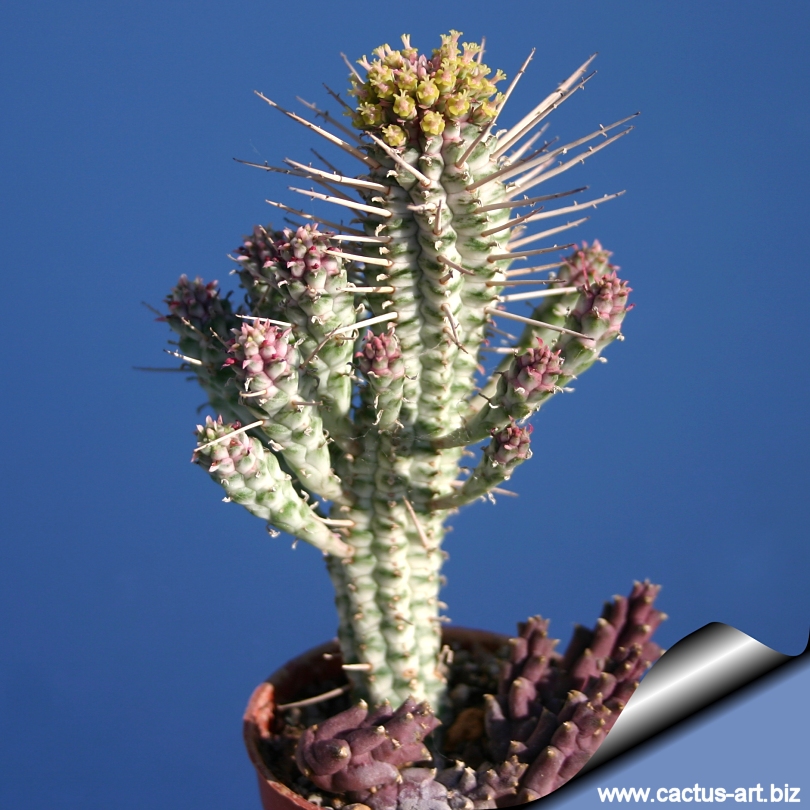
Euphorbia
mammillaris forma variegata
|
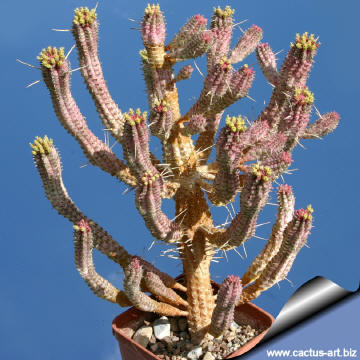 |
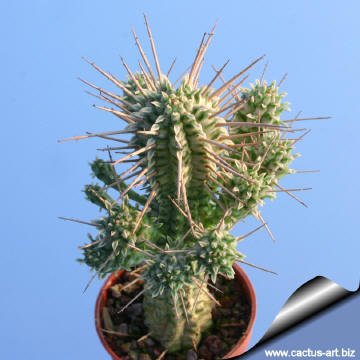 |
|
. |
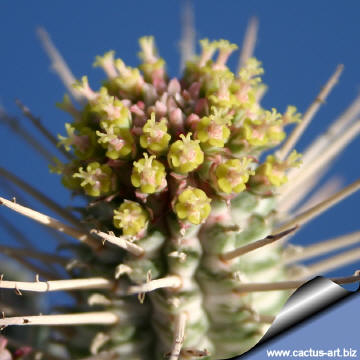 |
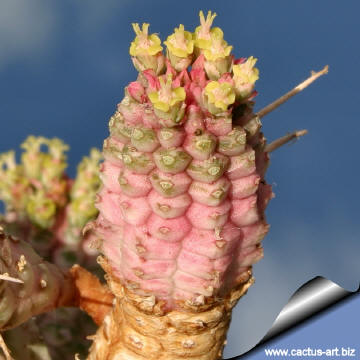 |
|
. |
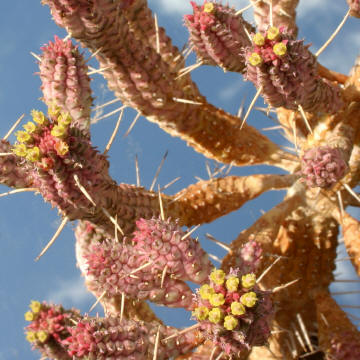
|
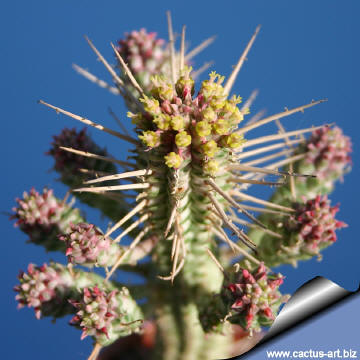
|
|


Advertising
|
|
|
|
|
|
|
Family: Euphorbiaceae
Accepted
scientific name: Euphorbia
mammillaris L.
In: Sp. Pl.:451 1753
Common English Names include:
Indian Corn Cob
Origin: South Africa (Little Karoo and Southern Cape area)
Habitat: Thorny bush-lands. At some
locations it is very common, often growing together with Euphorbia
esculenta and
Euphorbia ferox.
Conservation status: Listed in
CITES appendix 2.
Etymology: Named for Euphorbus, Greek physician to
Juba II, King of Mauretania. The species name "mammillaris"
means "having nipples" or "breasts"
|
|
Description: E. mammillaris
is a short stemmed dioecious shrublet producing a dense cluster.
Stem: Thick deep green, erect, simple and ribbed, that in
cultivated plants may branch above, 1,5-6 cm in diameter, Mature Height
20-35 cm tall. Usually there are many club-like lateral branches,
starting about 10 cm and arches upward.
Ribs: 7-17, with hexagonal crowded tubercles set in vertical rows
after the manner of an ear of corn and separated by horizontal grooves.
Spines: Occasionally present and scattered, thick, blunt and
whitish, up to 1 cm long. The “spines” are the solitary sterile
peduncles.
Leaves: Small, ephemeral.
Flower: It produces yellow solitary cyathia at the tip of each
stem. Peduncle ± 2 mm long with several bracts up to 3 mm long. Nectar
glands elliptic, separate, yellow-green to purplish.
Blooming season: Late winter to early summer.
Fruit: Obtusely lobed, up to 6 mm in diameter, subsessile.
Seeds: Ovoid, 3x2 mm, smooth.
Forma variegata: The
attractive variegated form is easily recognized for its stem which is
subtle-cream to frosty greenish-white coloured and splashed with emerald
green. In cold temperatures, stems become blushed with delicate rose.
Flowers: red and orange.
Euphorbia fimbriata is similar to Euphorbia
mammillaris but has conical stem tubercles.
|
|
|
|
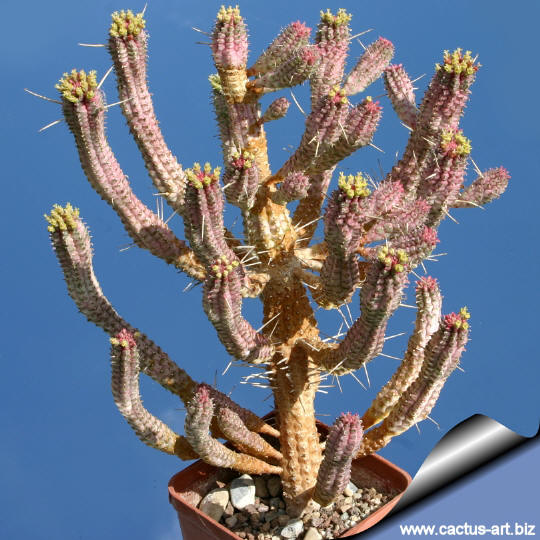
Cultivation:
It is an easy species to grow that is suited for any well drained soil
in full sun. But young plant are happy growing indoors, where they can
easily reach the ceiling. Give the plant an airy growing medium which
mainly consists of non organic material such us clay, pumice, lava grit,
and only a little peat or leaf-mould. Water regularly during the active
growing season from March to September. No water should ever be allowed
to stand around the roots. Keep almost completely dry in winter. It is a
moderately fast grower, and will quickly become large landscape
masterpieces in just 3-5 years. Only downside is from strong winds, the
columns often smash into each other, causing permanent scarring... best
to plant in such a location where winds are not a big issue. If plant
becomes very red, this is a sign that the roots have not developed
properly. It is a relatively fast growing and long lived plant and once
established, it will be content in its position and with its soil for
years. It can tolerate moderate shade, and a plant that has been growing
in shade should be slowly hardened off before placing it in full sun as
the plant will be severely scorched if moved too suddenly from shade
into sun. Like quite small pots, repott in very later winter, early
spring. Can be pruned for shape and branching. Frost tender, frost free
zones only. Plant Pests: Prone to mealy bugs and rarely scale.
Propagation: It is
easy to propagate by cuttings in late spring to summer, just take
a cutting of the plant let it dry for 1 or 2 weeks and stuff it in the
ground (preferably dry, loose, extremely well draining soil).
Warning: All Euphorbias contain a white sap that can be
irritating to eyes and mucous membranes. If contact is made with this
white sap, take care to not touch face or eyes before washing hands with
soap and water.
Photo of conspecific taxa, varieties, forms and
cultivars of Euphorbia mammillaris.
|
|